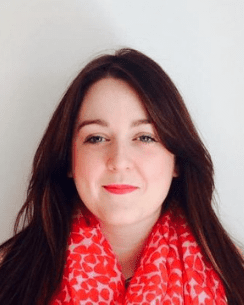Complex processes to bitesize chunks: How to use the CJS digital justice map

Community Justice Scotland’s new projects officer Victoria Guthrie shares her positive experiences of using the digital resource.
I have worked in or around the justice system since 2011 as a researcher and lecturer and perhaps the most striking thing I have learnt, is that it is a complex and somewhat confusing landscape. There are so many interconnected parts so it can be really challenging to get your head around it. That is one of the reasons why I love the interactive digital map produced by Community Justice Scotland. It breaks down the different components into bite size chunks and connects some of the dots for you.
Coming from an academic background, I have spent a considerable amount of time learning and teaching other students about Scotland’s justice system. Many of the students I have taught over the years have not been justice experts but instead psychology, nursing, or public health students who are trying to grapple with the complexity of the system, trying to understand the intricacies of it and discovering how their expertise might fit into it. I have used the digital map in many a lecture to highlight this too them.
Often when I’ve used the digital map I’ve worked through each section with students. We’ve looked at what constitutes crime, we’ve debated moral, philosophical, and legal underpinnings.
We have thought about all the factors which lead to justice involvement, the factors which influence trajectories through the justice system and the factors which support people out of it. As a social justice geek, I do this with friends and family too in a bid to highlight the impacts of cumulative disadvantage and adversity but also to highlight the importance of being kind, empathetic and supportive to each and every person you encounter. I think the digital map really helps these conversations.
I’ve recently joined Community Justice Scotland as a projects officer, providing research and analytical support and contributing to project management processes. One of the reasons I wanted to work for the organisation so much is that they believe in people and they believe that a more socially just Scotland is possible and are striving to make that a reality. I’m passionate about improving outcomes for people in or affected by the criminal justice system. I have a particular interest in interventions which support mental health and substance misuse recovery as well as parenting and family support programs.
It’s not just students who can benefit from this map. Many individuals working in the system and many of the people directly affected by it have talked to me about difficulties they have had trying to navigate their way through the Scottish justice system. The digital map can help them too. Coming into the justice system can be a daunting time for individuals, their friends, and their families. Not knowing how the system works or who/where they can turn to for support can add to the already distressing and anxious time. Lots of people I have met across my time in justice have also commented on difficulties they have experienced breaking the cycle of disadvantage and breaking the cycle of justice involvement. This is why I am particularly excited that the stories of real life people will be added to the digital map and will showcase some of the highs and lows of what it is like to work in or be in Scotland’s justice system.
